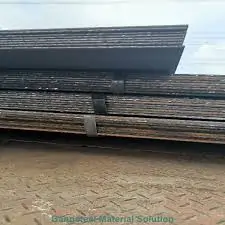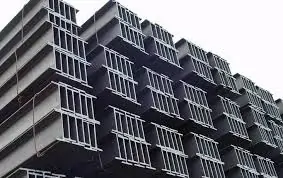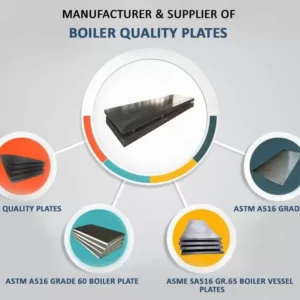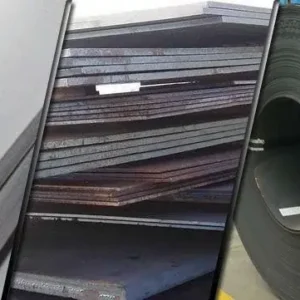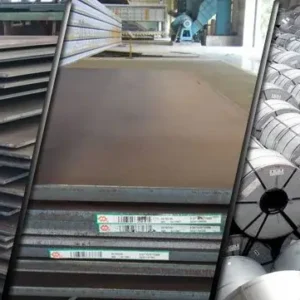ASTM A656 Grade 80 vs ASTM A131 AH36 – Properties & Applications
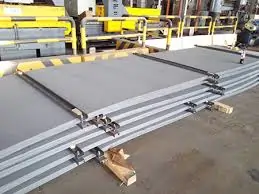
ASTM A656 Grade 80 High-Strength Steel & ASTM A131 Grade AH36 Shipbuilding Steel – Properties, Applications, and Comparison
Steel remains the backbone of infrastructure, transportation, and heavy industry. Among the many specialized grades available, ASTM A656 Grade 80 and ASTM A131 Grade AH36 stand out for their exceptional mechanical properties and specialized uses.
ASTM A656 Grade 80 is a high-strength, low-alloy structural steel designed for demanding load-bearing applications, while ASTM A131 Grade AH36 is a marine-grade steel optimized for shipbuilding and offshore structures. Each is manufactured under strict ASTM standards, ensuring consistent performance in its respective environment.
ASTM A656 Grade 80 High-Strength Steel
Overview
ASTM A656 Grade 80 is a high-strength, low-alloy (HSLA) structural steel plate with a minimum yield strength of 550 MPa (80 ksi). It is designed for applications requiring superior strength-to-weight ratios without sacrificing weldability or toughness.
Chemical Composition (Typical)
-
Carbon (C): ≤ 0.18%
-
Manganese (Mn): 1.00–1.65%
-
Phosphorus (P): ≤ 0.035%
-
Sulfur (S): ≤ 0.040%
-
Silicon (Si): 0.15–0.50%
-
Alloying elements: Small amounts of vanadium, columbium (niobium), and titanium for grain refinement and strength enhancement.
The controlled composition helps achieve a fine-grain structure, improving strength and toughness.
Mechanical Properties
-
Yield Strength: ≥ 550 MPa (80 ksi)
-
Tensile Strength: 620–760 MPa (90–110 ksi)
-
Elongation: 18–21% in 200 mm
-
Notch Toughness: Excellent, even in low temperatures
Key Advantages
-
High strength for reduced material weight in structures
-
Good weldability with standard processes
-
Resistance to atmospheric corrosion
-
Improved fatigue resistance for dynamic loading conditions
Applications
ASTM A656 Grade 80 is widely used in:
-
Crane booms and heavy equipment frames
-
Truck and trailer chassis
-
Construction machinery
-
Bridges and high-load structural supports
-
Industrial lifting and material handling equipment
Its high yield strength allows engineers to design lighter, more efficient structures without compromising safety.
ASTM A131 Grade AH36 Shipbuilding Steel
Overview
ASTM A131 Grade AH36 is a high-strength marine-grade steel plate designed for shipbuilding and offshore structures. It meets stringent standards for toughness, corrosion resistance, and weldability, enabling safe performance in harsh marine environments.
Chemical Composition (Typical)
-
Carbon (C): ≤ 0.18%
-
Manganese (Mn): 0.90–1.60%
-
Phosphorus (P): ≤ 0.035%
-
Sulfur (S): ≤ 0.035%
-
Silicon (Si): 0.10–0.50%
-
Copper (Cu): ≤ 0.35% (for corrosion resistance)
-
May contain microalloying elements for strength and toughness.
This balanced chemistry ensures durability under constant exposure to saltwater, wind, and mechanical stress.
Mechanical Properties
-
Yield Strength: ≥ 355 MPa (51 ksi)
-
Tensile Strength: 490–620 MPa (71–90 ksi)
-
Elongation: ≥ 21%
-
Impact Energy: High toughness at −20°C and below
Key Advantages
-
Exceptional resistance to seawater corrosion
-
High impact strength in low-temperature marine conditions
-
Excellent weldability for large ship hull sections
-
Compliance with marine classification society standards (ABS, LR, DNV, BV)
Applications
ASTM A131 Grade AH36 is primarily used in:
-
Ship hulls and decks
-
Offshore oil platforms
-
Cargo vessels and bulk carriers
-
Naval ships
-
Marine structural components like cranes, pipelines, and pontoons
Its performance ensures safety and longevity in the demanding conditions of the marine environment.
Comparison: ASTM A656 Grade 80 vs ASTM A131 Grade AH36
| Property / Feature | ASTM A656 Grade 80 | ASTM A131 Grade AH36 |
|---|---|---|
| Primary Use | High-strength structural | Shipbuilding & offshore |
| Yield Strength (MPa) | ≥ 550 | ≥ 355 |
| Tensile Strength (MPa) | 620–760 | 490–620 |
| Ductility | Moderate-High | High |
| Corrosion Resistance | Moderate | Excellent (marine-grade) |
| Impact Toughness | Excellent | Excellent at low temperatures |
| Welding Performance | Good | Excellent |
| Typical Applications | Cranes, bridges, heavy machinery | Ships, offshore platforms, marine structures |
The key distinction lies in their application environments: A656 Grade 80 excels in land-based heavy structural applications, while AH36 is specialized for the marine industry.
Manufacturing & Standards
Both grades are produced to meet ASTM standards and undergo rigorous quality checks:
-
ASTM A656: Controlled rolling, thermomechanical processing, and sometimes quenching & tempering to achieve strength levels.
-
ASTM A131 AH36: Normalizing or controlled rolling for improved grain structure and toughness; testing for Charpy V-notch impact resistance at low temperatures.
Both steels can be certified by third-party agencies to meet additional specifications for safety-critical projects.
Market Demand & Availability
-
A656 Grade 80 remains popular in industries looking to reduce weight without compromising load capacity, driving demand in heavy equipment and transport sectors.
-
AH36 continues to be in strong demand as global shipbuilding activity increases, especially for LNG carriers, cargo vessels, and offshore oil infrastructure.
Both are widely stocked by major steel suppliers in various thicknesses, widths, and lengths, often with mill test certificates.
Conclusion
ASTM A656 Grade 80 and ASTM A131 Grade AH36 are both high-performance steels but tailored for very different applications.
-
A656 Grade 80 offers exceptional strength-to-weight performance for heavy structural and load-bearing designs, making it ideal for cranes, trailers, and construction equipment.
-
AH36 delivers unmatched toughness and corrosion resistance in marine environments, ensuring safe and durable ship hulls and offshore structures.
Choosing the right grade is a matter of matching the steel’s mechanical properties and environmental resistance to the specific demands of the project. Both materials represent the high-quality standards expected from ASTM-certified steels, ensuring reliability in the most challenging conditions.

